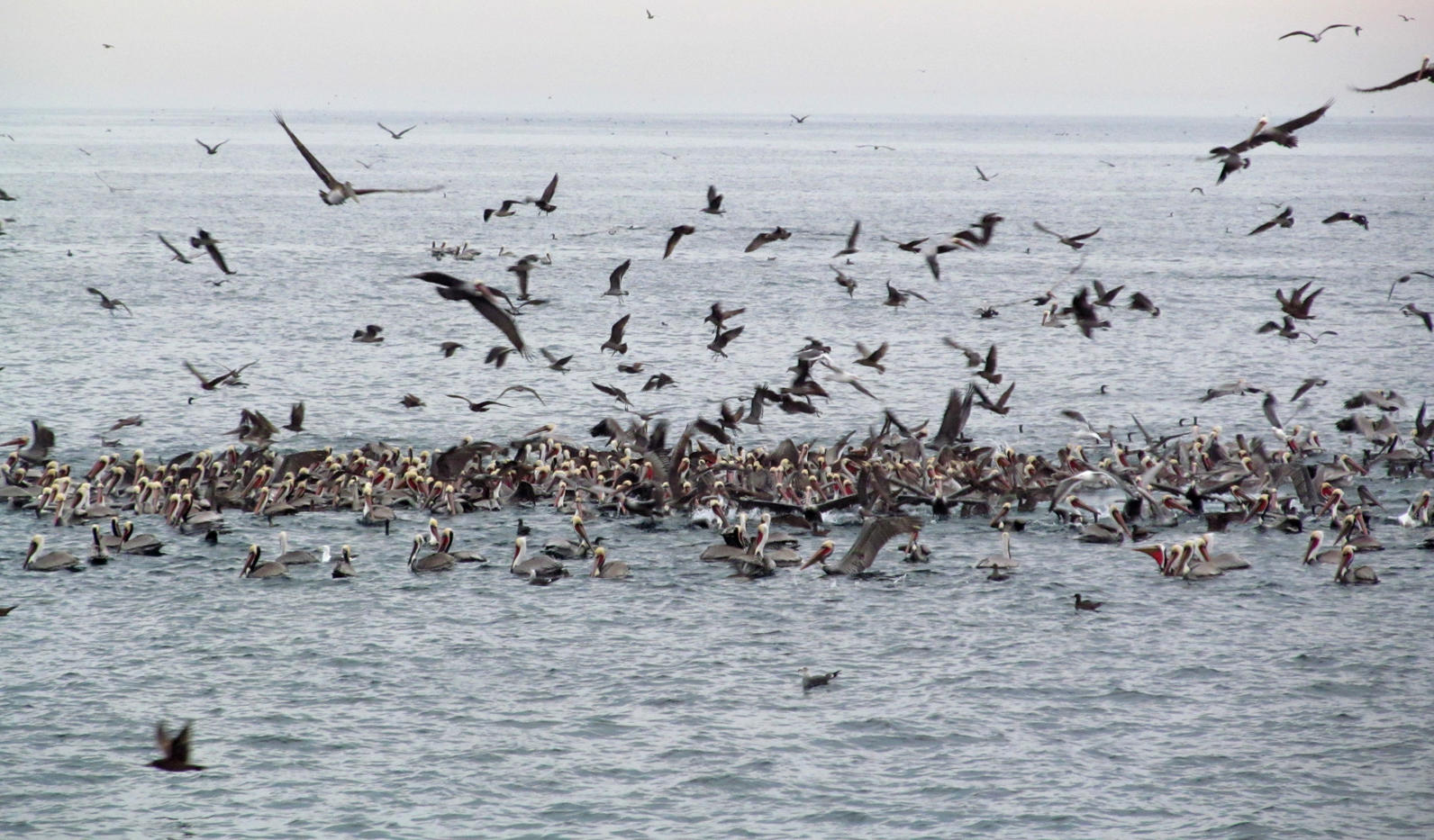
Having spent a great deal of time in East Africa, this was one of the best safaris I’ve ever experienced. We were surrounded by some of the earth’s rarest creatures, some of them so enormous and close that we could smell their warm breath. At one point, countless creatures swarmed in our direction, and we felt swept in a rumbling migration, a biological imperative going back millennia.
But we weren’t bouncing across an African savanna in a Range Rover. We were on a boat off the coast of California within the Monterey Bay National Marine Sanctuary. Instead of elephants and giraffes, we had at least 50 humpback whales. Massive schools of small fish attracted huge numbers of sea lions, pelicans and gulls – the water was boiling with life.
The four national marine sanctuaries off the coast of California – Channel Islands, Monterey Bay, Greater Farallones, and Cordell Bank – are every bit as rich with wildlife and rarified natural treasures as our national parks on land, and are thoughtfully stewarded by the National Oceanic and Atmospheric Administration. They are places we should be proud of, not attacking.
And yet that’s exactly what the Trump Administration is doing. As part of his strategy to exploit these sanctuaries, and those around the country, Trump in April ordered the Department of Commerce to review any sanctuary created or expanded in the last ten years with a mind toward eliminating them or shrinking them to allow oil drilling, mining, expanded fishing, or other resource extraction.
This is unreasonable – Californians have reiterated their opposition to new oil drilling off the coast of California. Nobody wants this.
Our unspoiled coastlines are a major part of our identity as Californians. I don’t have exact statistics about tourism postcards sent from California, but I’d bet that the vast majority of them feature photos of our coastline.
By stating its desire to open these waters to specific economic interests, the Trump Administration has made it clear that it intends to ignore decades of bipartisan support from federal, state, and local elected officials – needless to say the countless residents that participated in the process.
The powerful ocean upwelling and majestic kelp forests in these sanctuaries support extensive breeding sites and food resources for marine birds such as Brown Pelican, Black-footed Albatross, Sooty Shearwater, Ashy Storm-petrel and dozens of others. Marine birds are among the world’s most threatened, and the human activities described in Trumps April executive order will put them even more at risk.
But these rare ecological conditions support much more than birds. An extensive and varied constellation of marine life enjoy these areas, as well.
The ecological qualities of these sanctuaries should be enough to sustain them, but it is nonetheless important to recognize the indisputable benefits they have to the state economy. Coastal property values are dependent on unspoiled beaches and views. Visitors from around the world support many thousands of jobs related to coastal tourism and recreation. Recreational and commercial fisheries rely upon the unspoiled sanctuaries.
All of this was recognized in the processes that led to the designation and expansion of California’s national marine sanctuaries. Peer-reviewed science was weighed along with extensive public input at numerous public hearings, all in compliance with federal regulations governing the designation process.
California’s national marine sanctuaries are among our greatest treasures. We shouldn’t be even having this discussion, but since that’s unavoidable, it’s important to send the Trump Administration a resounding message that we want these “savannas of the ocean” kept at their current size and level of protection.
The federal government is taking public comments on the marine sanctuaries review through July 26.
Andrea Jones is director of conservation for Audubon California
By Andrea Jones
HOTSPOT: Flyover of California's Birds and Biodiversity
California is a global biodiversity hotspots, with one of the greatest concentrations of living species on Earth.
Popular Stories
- California’s birds will benefit greatly if Prop 4 passes this November
- Prop 4 and Our Future: A Climate Action Q&A with Mike Lynes
- California Voters Said Yes to Prop 4, a Win for Birds, People, and Our Shared Future!
- New Eelgrass Protection Zone launches in Richardson Bay!
- Uniting People, Birds, and Land through Agriculture




